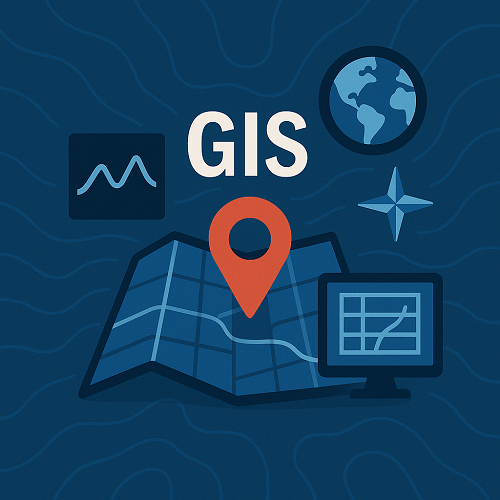TL;DR
- Comprehensive utility datasets (drains, sewers, and transport networks) are driving smarter urban planning.
- Interoperability and real-time data integration are priorities for 2025 GIS implementations.
- Governments and enterprises are adopting open data frameworks to improve accessibility.
- AI and cloud GIS platforms are accelerating spatial analytics and collaboration.
- Emerging standards ensure better data accuracy and sustainable infrastructure management.
- Case studies show significant efficiency gains from integrating GIS with IoT and asset management tools.
What’s New Right Now
The Geospatial Information System (GIS) landscape in 2025 is defined by its growing ability to integrate diverse infrastructure datasets—such as utilities, transportation, and drainage networks—into unified digital maps used by multiple agencies and sectors. This movement toward holistic data accessibility and integration builds on initiatives reported by spatial data organizations including Esri and global open data collaborations. These platforms emphasize real-time synchronization, ensuring decision-makers have current, actionable intelligence.
Recent updates spotlight standardization of underground infrastructure mapping, improved metadata documentation, and API-driven interoperability. Emerging frameworks like the Open Geospatial Consortium (OGC) standards continue to guide data sharing protocols across utilities and government systems.
Why It Matters
For technical stakeholders, integrated GIS datasets provide streamlined workflows, reducing duplication and improving data trustworthiness. For business leaders, the benefits translate into faster project approvals, risk reduction, and evidence-based investment decisions. As smart city programs and climate adaptation efforts accelerate, reliable geospatial intelligence is critical to asset management and citizen engagement.
Modern enterprises using detailed geospatial insights can anticipate failures in drainage networks, optimize transport routes, and enhance compliance reporting—transforming GIS from a mapping tool into a core decision engine.
Geospatial Transformations in 2025
1. Unified Utility Mapping
Most municipalities now maintain interconnected datasets covering water, sewer, and power infrastructure. These databases improve emergency response times and allow field technicians to access synchronized maps through mobile GIS applications.
2. Cloud-Native GIS Services
With processing shifting to cloud architectures, agencies can handle massive raster and vector datasets without hardware bottlenecks. Integration with AI-assisted pattern recognition helps detect anomalies in sewer systems or traffic flow models automatically.
3. Cross-Department Integration
Multiple public works departments can now operate on a shared GIS platform, reducing redundancy and breaking down silos. Data can be securely shared with external contractors for infrastructure development or environmental monitoring.
Comparison of Emerging Approaches
| Approach | Key Feature | Main Benefit | Example Use Case |
|---|---|---|---|
| Traditional On-Premise GIS | Static datasets, limited sharing | High control, low flexibility | Local cadastral mapping |
| Cloud-Based GIS | Dynamic data access, scalability | Multi-user collaboration | Smart city dashboards |
| Hybrid GIS Architecture | Combines local and cloud storage | Security and performance balance | Utility asset management |
| AI-Enhanced GIS | Predictive analytics, automations | Faster insights | Flood risk forecasting |
Mini Case Study: Integrating Drainage and Transport Data for Flood Prevention
Problem: A mid-sized coastal city experienced repeated stormwater overflows due to outdated drainage maps and uncoordinated road maintenance schedules.
Approach: The city’s GIS department implemented a cloud-based GIS platform that combined drainage, elevation, and transport datasets. Machine learning algorithms scanned the integrated data layers to identify flood-prone intersections. Updates were shared automatically with field service crews and contractors.
Outcome: The city reduced emergency response times by 35% and prevented an estimated $1.2 million in infrastructure damage during the following storm season. The success inspired neighboring municipalities to adopt similar geospatial coordination frameworks.
Implementation Checklist
- Assess existing geospatial datasets and confirm metadata completeness.
- Adopt an interoperability framework aligned with OGC standards.
- Establish secure APIs for cross-department data sharing.
- Integrate sensor and IoT feeds for real-time situational awareness.
- Train teams on analytics dashboards and mobile GIS usage.
- Monitor data quality through scheduled validation routines.
- Measure ROI by tracking efficiency, cost, and time savings.
FAQs
1. What is driving the push for GIS data integration in 2025?
Growing urbanization and the need for resilient infrastructure drive the push. Integrated GIS helps centralize data for faster, more reliable decision making.
2. How does AI enhance modern GIS applications?
AI assists with pattern detection, predictive maintenance, and automated classification of imagery, saving time and improving accuracy.
3. Are open datasets secure?
Yes, provided they follow data governance standards. Encryption, role-based access, and version control minimize security risks while enabling transparency.
4. Which industries benefit most from updated GIS datasets?
Utilities, transportation, environmental management, insurance, and logistics all gain measurable efficiency improvements from accurate, real-time spatial data.
5. What is the role of open-source GIS in 2025?
Open-source platforms like QGIS and PostGIS continue to democratize access, enabling small municipalities and NGOs to implement professional-grade mapping at low cost.
6. How can businesses measure the ROI of GIS investments?
ROI can be tracked via reduced downtime, faster permit approvals, and improved asset lifecycles. Benchmarking pre- and post-GIS metrics helps quantify impact.
Conclusion
The evolution of GIS in 2025 signals a decisive step toward truly connected infrastructure. By combining rich utility datasets with advanced analytics, organizations can plan sustainably and respond dynamically to complex urban challenges. To stay ahead, explore how tailored solutions can integrate your spatial data workflows—visit our GIS services to learn more.
